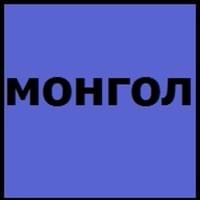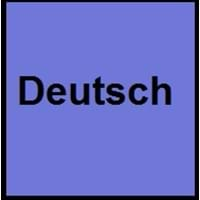Countries
China, Mongolia
Austria, Belgium, Germany, Italy, Liechtenstein, Luxembourg, Switzerland
National Language
China, Mongolia
Germany
Second Language
Not spoken in any of the countries
North Dakota, United States of America
Speaking Continents
Asia
Europe
Minority Language
Not spoken in any of the countries
Czech Republic, Denmark, Former Soviet Union, France, Hungary, Italy, Namibia, Poland, Romania, Slovakia, Slovenia
Regulated By
Council for Language and Literature Work, State Language Council (Mongolia)
Council for German Orthography
Interesting Facts
- Mongolian was first written using Phagspa script in late 13th century.
- There is no connection between Mongolian, Japanese and Korean, but still in terms of grammar and sentence structure they are very similar.
- One of the large group of Indo-Germanic languages is German.
- The second most popular Germanic language spoken today behind English is German language.
Similar To
Turkish Language
Dutch, Danish, Norwegian, Swedish and English Languages
Derived From
Not Available
Albanian Languages
Alphabets in
Mongolian-Alphabets.jpg#200
German-Alphabets.jpg#200
Scripts
Mongolian alphabets: Traditional Mongolian script
Latin
Writing Direction
Not Available
Left-To-Right, Horizontal
Hello
Сайн уу (Sain uu)
hallo
Thank You
та бүхэнд баярлалаа (ta bükhend bayarlalaa)
Danke
How Are You?
Юу байна? (Yuu baina?)
Wie geht es dir?
Good Night
Сайн шөнийн (Sain shöniin)
gute Nacht
Good Evening
Сайн үдэш (Sain üdesh)
guten Abend
Good Afternoon
Сайн Үдээс хойш (Sain Üdees khoish)
guten Tag
Good Morning
Өглөөний мэнд (Öglöönii mend)
guten Morgen
Please
Хэрэв (Kherev)
bitte
Sorry
Уучлаарай (Uuchlaarai)
Verzeihung
Bye
Баяртай (Bayartai)
Tschüs
I Love You
Би чамд хайртай (Bi chamd khairtai)
Ich liebe dich
Excuse Me
Өршөөгөөрэй (Örshöögöörei)
Entschuldigung
Dialect 1
Khalkha Mongolian
Swiss German
Where They Speak
Mongolia
Switzerland
How Many People Speak
Not Available
Dialect 2
Ordos Mongolian
Swabian German
Where They Speak
Mongolia
Germany
Dialect 3
Khorchin Mongolian
Texas German
Where They Speak
Mongolia
Texas
How Many People Speak
Not Available
Speaking Population
Not Available
Second Language Speakers
Not Available
Native Name
монгол (mongol) монгол хэл (mongol hêl)
Deutsch
Alternative Names
Not Available
Deutsch, Tedesco
French Name
mongol
allemand
German Name
Mongolisch
Deutsch
Pronunciation
/mɔŋɢɔ̆ɮ xiɮ/
[ˈdɔʏtʃ]
Ethnicity
Not Available
Germans
Origin
1224-1225
6th Century AD
Language Family
Mongolic family
Indo-European Family
Subgroup
Mongolian
Germanic
Branch
Not Available
Western
Early Forms
Middle Mongolian, Classical Mongolian, Mongolian
No early forms
Standard Forms
Khalkha, Southern Mongolian
German Standard German, Swiss Standard German and Austrian Standard German
Language Position
Not Available
Signed Forms
Mongolian Sign Language
Signed German
Scope
Macrolanguage
Individual
ISO 639 6
Not Available
deus
Glottocode
mong1331
high1287, uppe1397
Linguasphere
part of 44-BAA-b
52-ACB–dl & -dm
Language Type
Living
Living
Language Linguistic Typology
Subject-Object-Verb
Subject-Object-Verb, Subject-Verb-Object
Language Morphological Typology
Not Available
Fusional, Synthetic
Mongolian and German Greetings
People around the world use different languages to interact with each other. Even if we cannot communicate fluently in any language, it will always be beneficial to know about some of the common greetings or phrases from that language. This is where Mongolian and German greetings helps you to understand basic phrases in Mongolian and German language. Mongolian word for "Hello" is Сайн уу (Sain uu) or German word for "Thank You" is Danke. Find more of such common Mongolian Greetings and German Greetings. These greetings will help you to be more confident when conversing with natives that speak these languages.
Mongolian vs German Difficulty
The Mongolian vs German difficulty level basically depends on the number of Mongolian Alphabets and German Alphabets. Also the number of vowels and consonants in the language plays an important role in deciding the difficulty level of that language. The important points to be considered when we compare Mongolian and German are the origin, speaking countries, language family, different greetings, speaking population of these languages. Want to know in Mongolian and German, which language is harder to learn? Time required to learn Mongolian is 44 weeks while to learn German time required is 30 weeks.





